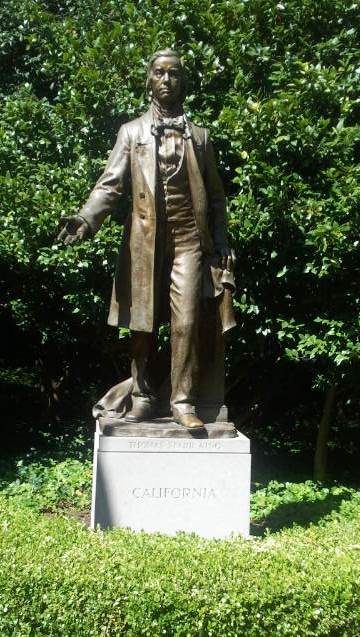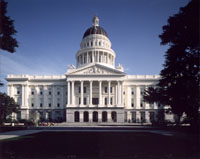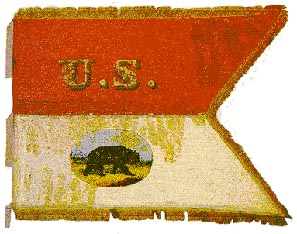LINK: California State Capitol Museum and Park
---A Civil War Memorial grove, planted in 1897 from saplings taken from famous Civil War Battlefields, was the park's first monument and can still be visited today. A honey locust taken from Gettysburg, a catalpa taken from Fredericksburg, and a "Tree of Peace" taken from the Appomattox Courthouse are among some of the grove's still-living artifacts.
---Welcoming you to the north entrance of the grove is a statue of Thomas Starr King, the Unitarian minister whom Lincoln credited as being the most responsible for keeping California on the side of the Union. King's efforts, in which he equated Christian values to aiding the anti-slavery/Union cause, were responsible for most of California's massive and wildly disproportionate contribution to the U.S. Sanitary Commission, the primary organization for the treatment of wounded Union soldiers. Thomas Starr King passed away from pnemonia in 1864, the result of exhaustion from his relentless lecture circuit.
---The Capitol Building, while not occupied until 1869, itself is a piece of Civil War-era architecture: the cornerstone was laid in 1861; the war itself delayed the buildings' construction. The Capitol's architecture was patterned after not only the U.S. Capitol, but other state capitols as well, including the Virginia State Capitol building which became the Confederate Capitol at Richmond, VA.
---Battle Guidon of the California 100 regiment, held by the Captiol Museum as part of its historic flags collection.
